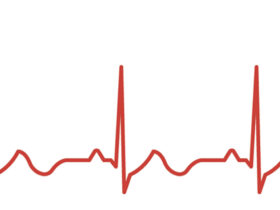Cholesterol, a waxy substance in your blood, is essential for building healthy cells. However, when levels become too high, it can lead to significant health risks, including peripheral artery disease (PAD). This article explores cholesterol awareness and its connection to PAD, a condition affecting millions worldwide.
Understanding Cholesterol
Cholesterol comes in two main types: low-density lipoprotein (LDL), often called “bad” cholesterol, and high-density lipoprotein (HDL), known as “good” cholesterol. Maintaining a proper balance is crucial for overall health.
LDL cholesterol can accumulate in arteries, forming plaque that narrows and hardens them. This process, called atherosclerosis, is the primary cause of various cardiovascular diseases, including PAD. HDL cholesterol helps remove excess cholesterol from the bloodstream, transporting it to the liver for disposal.
High Cholesterol and Peripheral Artery Disease
Peripheral artery disease occurs when arteries supplying blood to the limbs, particularly the legs, become narrowed or blocked due to atherosclerosis. This restriction of blood flow can cause pain, numbness, and in severe cases, tissue death leading to amputation.
High cholesterol, especially elevated LDL levels, is a primary risk factor for PAD. Excess LDL cholesterol can penetrate arterial walls, triggering an inflammatory response. Over time, this process leads to plaque formation, consisting of cholesterol, cellular debris, and calcium.
As plaque builds up, it narrows the arteries, reducing blood flow to the extremities. This reduced circulation can cause symptoms such as:
1. Leg pain or cramping during physical activity (claudication)
2. Numbness or weakness in the legs
3. Coldness in the lower leg or foot
4. Slow-healing sores on toes, feet, or legs
5. Hair loss or slower hair growth on legs and feet
6. Shiny skin on the legs
7. Weak or absent pulses in the legs or feet
The Importance of Cholesterol Awareness
Understanding your cholesterol levels is crucial for preventing conditions like PAD. Regular cholesterol screenings are essential, especially for those with risk factors such as family history, obesity, sedentary lifestyle, poor diet, smoking, diabetes, and advanced age.
A simple blood test can determine your cholesterol levels. The National Cholesterol Education Program recommends the following target levels for adults:
– Total cholesterol: Less than 200 mg/dL
– LDL cholesterol: Less than 100 mg/dL
– HDL cholesterol: 60 mg/dL or higher
– Triglycerides: Less than 150 mg/dL
Managing Cholesterol to Prevent PAD
If your cholesterol levels are high, several steps can help bring them under control and reduce your risk of developing PAD:
1. Dietary changes: Adopt a heart-healthy diet low in saturated and trans fats. Increase intake of fruits, vegetables, whole grains, and lean proteins. Consider foods known to lower cholesterol, such as oats, nuts, and fatty fish rich in omega-3 fatty acids.
2. Regular exercise: Engage in at least 150 minutes of moderate-intensity aerobic activity or 75 minutes of vigorous-intensity aerobic activity per week. Exercise helps raise HDL cholesterol levels and aids in weight management.
3. Weight management: Maintaining a healthy weight can help lower LDL cholesterol and reduce PAD risk.
4. Quit smoking: Smoking lowers HDL cholesterol and increases atherosclerosis risk. Quitting can significantly improve your cholesterol profile and overall cardiovascular health.
5. Medication: In some cases, lifestyle changes alone may not be sufficient. Your doctor may prescribe medications such as statins to effectively lower LDL cholesterol and reduce PAD risk.
6. Regular check-ups: Schedule regular check-ups with your healthcare provider to monitor your cholesterol levels and overall cardiovascular health.
Conclusion
Cholesterol awareness is crucial in the fight against peripheral artery disease and other cardiovascular conditions. By understanding cholesterol’s role in PAD development and taking proactive steps to manage your levels, you can significantly reduce your risk of this debilitating condition.
High cholesterol often has no symptoms, earning it the nickname “silent killer.” Regular screenings and a commitment to a heart-healthy lifestyle are your best defenses against PAD and other cholesterol-related diseases. By staying informed and taking action, you can protect your arteries, maintain healthy circulation, and enjoy a higher quality of life for years to come.
Remember, prevention is key. Take charge of your cholesterol levels today to safeguard your cardiovascular health for tomorrow.
Vascular and Vein Center at Gulfcoast Surgeons has been one of the most respected vein clinics in Southwest Florida for over 30 years. Our surgeons, Dr. Abraham Sadighi, Dr. Johan Escribano, and Dr. Vijayakumar Tanjavur have performed thousands of vascular and vein surgeries with consistently positive outcomes.
We focus on diseases of the vascular system that can range from harmless but unattractive spider veins to dangerous conditions such as peripheral artery disease. Our caring and dedicated team will help you identify problems and offer the best treatment options for you.
Vascular and Vein Center of Gulfcoast Surgeons
877-LEG-PAIN
gulfcoastsurgeons.com
Fort Myers
8010 Summerlin Lakes Dr., Ste. 100
Fort Myers, FL 33907
Cape Coral
1003 Del Prado Blvd., Ste. 303
Cape Coral, FL 33990
Bonita Springs
24301 Walden Center Dr., Ste. 102
Bonita Springs, FL 34134






